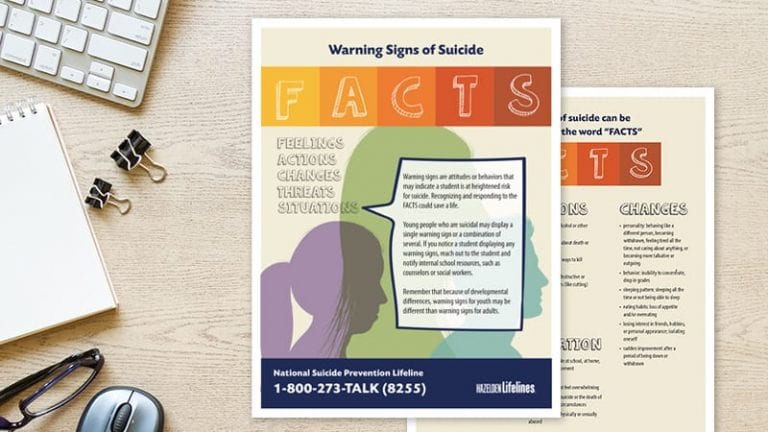Even as we return to school this fall, many students still have feelings of worry, fear, isolation, and grief caused by the social, medical, and economic uncertainty they’ve experienced over the past year. Unfortunately, without intervention, these overwhelming emotions could lead a fraction of our students to contemplate dark thoughts of suicide.
What should schools do to help with youth suicide prevention? For teachers, it can be hard to know whether a student is feeling “down” or might be truly at risk. However, there are signs to look for and questions to ask that can help prevent a tragedy like suicide.
Mental health concerns for students are on the rise.
According to a recent CDD report, the number of mental health–related emergency room visits in 2020 increased by 24% for children aged 5-11 and 31% for youth aged 12–17. Even before the pandemic, suicide was the second-leading cause of death for teens ages 15-19. Recent data showed the suicide rate for our older teenagers was higher than it had been in two decades.
Losses, abuse, and isolation all increase suicide risk, and many of these situations became more common during the pandemic. In addition, youth struggling with mental health issues might have found it harder to get help because they were isolated or didn’t know how to access medical care.
Educators provide a critical safety net.
Teachers and administrators are well-positioned—sometimes even more so than parents—to objectively spot signs of suicide . These can include changes in behavior, becoming withdrawn, or a sudden change in achievement at school.
Unfortunately, those signs can be harder to distinguish right now, when many students are struggling emotionally and academically. A youth suicide prevention program, such as Hazelden’s Lifeline Trilogy, can help educators distinguish between students who are dealing with normal feelings and those who might be at risk for suicide.
Talking about suicide doesn’t encourage it.
Admittedly, talking about suicide can be uncomfortable, so many people avoid it. However, if teachers suspect that a student is suicidal, they should express this concern. Remember—talking about suicide will not encourage it. In fact, it will have the opposite effect. Experts urge people to use the word “suicide” and ask difficult questions like, “Do you have a plan for how you would kill yourself?” These questions help connect the student with the help that they need.
Of course, if the intervention happens remotely, it’s important to know that the student is safe at that moment. School administrators and teachers should work together to develop a youth suicide intervention plan that can be utilized remotely.
Help prevent suicide at your school.
Looking after our students’ mental health is more important than ever this year. Join this free, on-demand webinar: Anticipating and Addressing Students’ Mental Health Needs in the Upcoming Academic Year.

Using the evidence-based Lifelines Intervention model as an example, prevention expert Maureen Underwood, LCSW will share warning signs and concrete examples of how educators can take a conversational approach to initiating interactions with students about safety and suicide.
Just click the orange button below to learn more and sign up.
Yes, I Want to Prevent Suicide at My School



